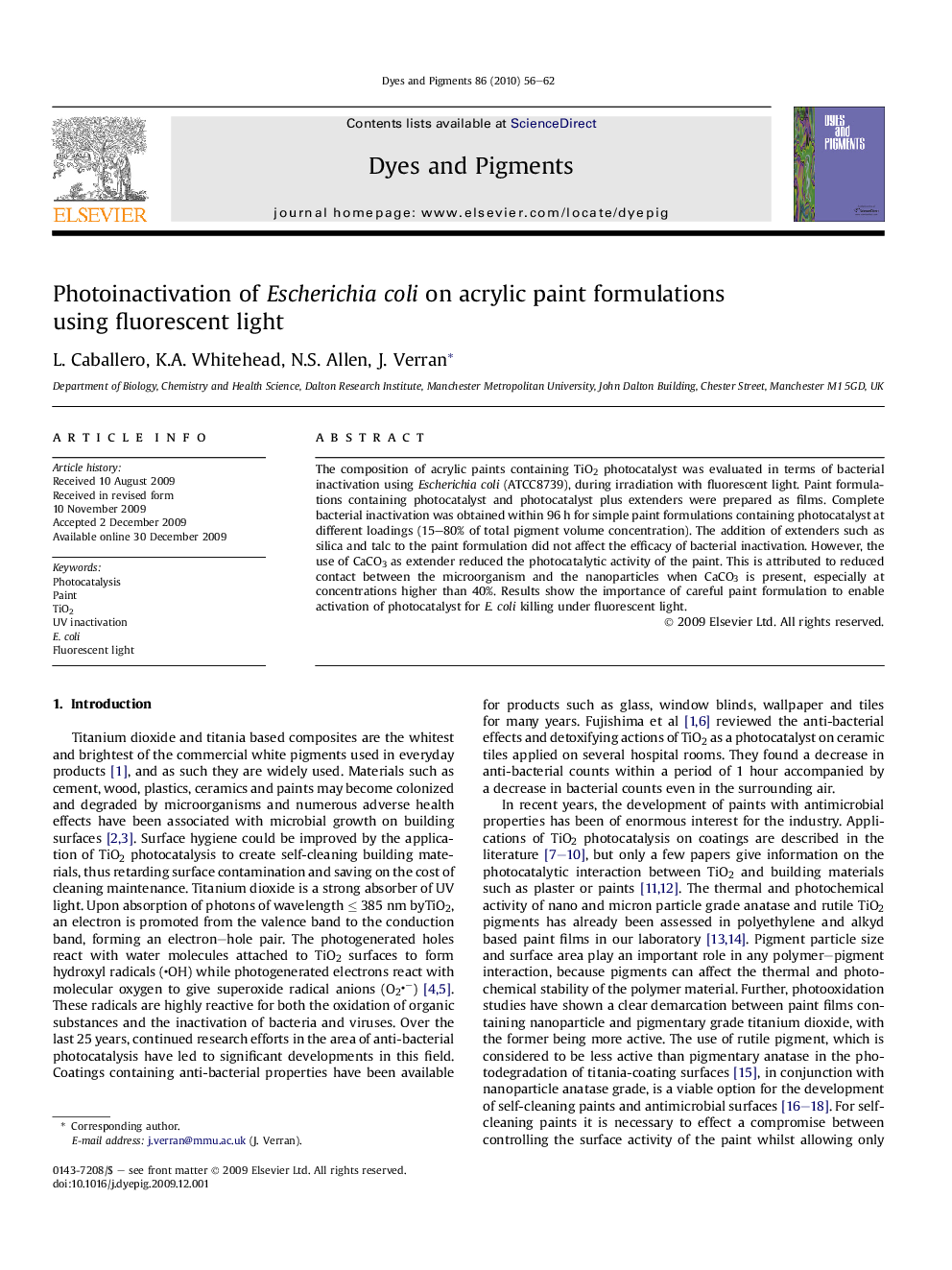| Article ID | Journal | Published Year | Pages | File Type |
|---|---|---|---|---|
| 177424 | Dyes and Pigments | 2010 | 7 Pages |
The composition of acrylic paints containing TiO2 photocatalyst was evaluated in terms of bacterial inactivation using Escherichia coli (ATCC8739), during irradiation with fluorescent light. Paint formulations containing photocatalyst and photocatalyst plus extenders were prepared as films. Complete bacterial inactivation was obtained within 96 h for simple paint formulations containing photocatalyst at different loadings (15–80% of total pigment volume concentration). The addition of extenders such as silica and talc to the paint formulation did not affect the efficacy of bacterial inactivation. However, the use of CaCO3 as extender reduced the photocatalytic activity of the paint. This is attributed to reduced contact between the microorganism and the nanoparticles when CaCO3 is present, especially at concentrations higher than 40%. Results show the importance of careful paint formulation to enable activation of photocatalyst for E. coli killing under fluorescent light.
